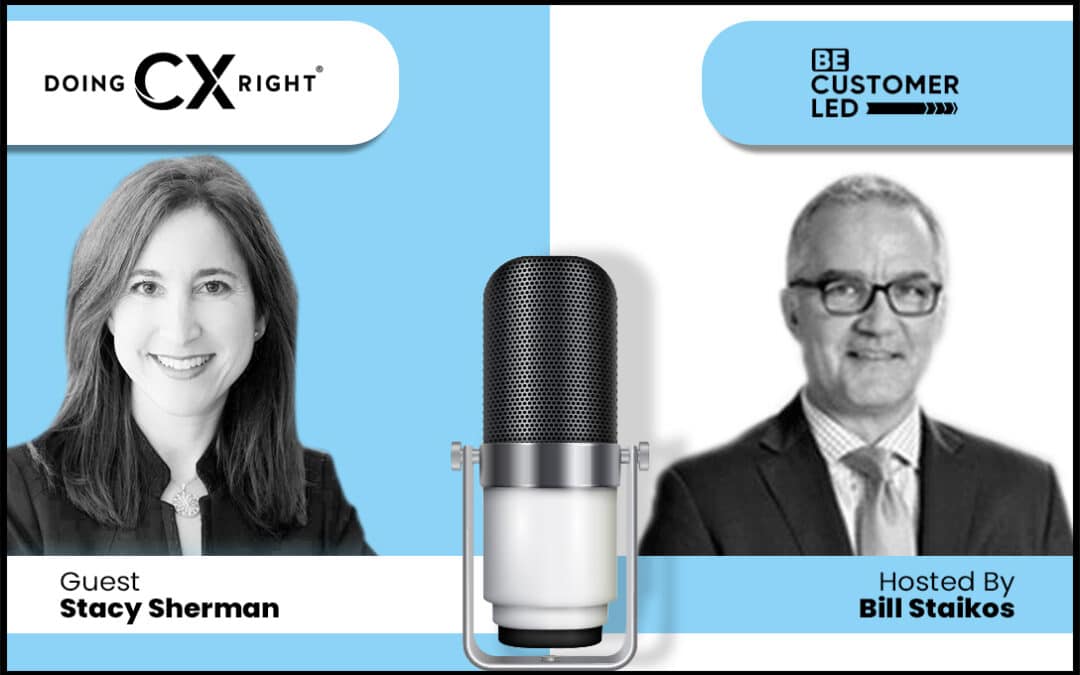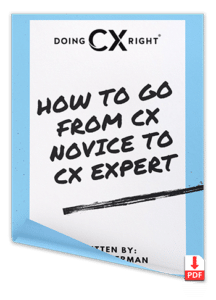
Why COVID-19 Can Be The Catalyst For Enhancing Your VoC Program
Voice of the Customer, commonly referred to as VOC, can be YOUR company game-changer WHEN DONE RIGHT! I speak a lot on podcasts about VOC and the art and science of getting feedback from customers to inform business decisions, and employees (VOE) too. This is the theme of my recent Customer Experience book.
Getting customer feedback and applying VOC best practices is essential especially during a pandemic because people’s expectations are constantly changing. MyCustomer asked a variety of experts, including me, about how to enhance customer experiences through a VOC program during tough times. Below is a summary of our conversations and tips about making VOC surveys more compelling.
Research Tells Us:
In 2016, in what was possibly the most meta consumer survey of all time, a 2016 OpinionLabs study revealed that 72% of consumers didn’t like being surveyed by brands.
More explicitly – respondents felt surveys interfered with their experience with a brand, while the same study found that 80% of customers had abandoned a survey halfway through because it was soporific.
It’s long been a catch-22 situation for businesses seeking to gauge the opinion of their customers – how to survey in a manner that’s not intrusive or damaging to the relationship they’ve fostered whilst also gleaning enough information to make the process worthwhile.
“To know how satisfied your customers are, you need them to tell you. The trouble is, customers aren’t playing ball with surveys anymore,” explains Sophie Leaver, marketing operations for Customer Thermometer.
Voice of the Customer (VOC)
In recent years Voice of the Customer (VoC) programs have helped apply science to the art of surveying customers.
By asking for feedback at different points in a customer journey, and then applying some real-time thinking and a closed-loop system, VoC is aimed at removing some of the more painful or unnecessary elements of other longer-form surveys, which are often pushed to customers at the point of transaction.
“A VoC program enables leaders to understand customers and target audience perceptions and expectations,” explains Stacy Sherman, Head of Customer Experience for Schindler Elevator Corp. in North America, and the founder of DoingCXRight.
“It’s essential when building new products and developing market messaging or service processes.
“Developing the right questions to validate peoples’ needs are what I call ‘heart and science’. For example, if customers say that ‘communication’ is important and it turns out to be a key factor for dissatisfaction, then surveys need to incorporate reasons WHY communication is a pain point. You may start with high-level themes but then need to revise surveys to dig deeper so that feedback is actionable.”
Surveying During Coronavirus
This need for making surveys actionable is what drives VoC programs, and has taken on a renewed purpose since the coronavirus pandemic swept the globe at the start of 2020.
One organization that has felt the weight of COVID-19 as heavily as most is Stagecoach, which, as a provider of buses, coaches, and trams across the UK and other parts of the world, saw its customer base slashed almost overnight, as the result of the pandemic.
Keith Gait, who heads up the company’s customer service operations, was overseeing a trial of a new VoC program for Stagecoach which was due to be rolled out the week the UK went into lockdown in March. The company decided to hold back on the rollout, and despite an “almost total drop-off in passenger numbers for 2 to 3 months”, discovered something new about their customers that fed back into their VoC program design.
“We were still getting interactions from our previous feedback program at this time and we found that whilst our customer base was diminished, those people that were still traveling really, really valued the service, and our NPS went up a further 13 points during a lockdown,” Gait explains.
“It made me realized that we needed to re-evaluate the VoC program we were about to roll out, and so during a lockdown, I spent a lot of time talking to people about how to improve it and make it more actionable.
“The view was we needed to make it more human, so that’s where we have focused. The feedback requests needed to be much more personable, much more about the human characteristics – of the driver, of the cleaners, of the welcome, of the safety – and generally less corporate. But whilst trying to still keep it very short. Our VOC program is all customer-led, it’s proactive on their part, delivered to them while they are actually on a bus, so we need to be mindful of the short attention frame we have with them.”
“The feedback requests needed to be much more personable, much more about the human characteristics.”
Stacy Sherman’s team at Schindler also took a similar approach to their VoC program during the COVID-19 lockdown, acknowledging that a much more ‘human’ approach was necessary to stay in contact with customers during a period of unprecedented uncertainty, and gauge their thoughts and feelings in a more direct manner:
“My survey team pivoted to “peace of mind” phone calls. Instead of asking traditional questions that don’t apply right now, we contacted customers to express empathy and inform them that we’re here for them. We authentically asked customers how we can be of help, which has fuelled loyalty. As Maya Angelou says, ‘people will forget what you did and said, but never forget how you made them feel’.”
In a recent post for MyCustomer, Claire Sporton, customer experience innovation lead at VoC specialists Confirmit, believes the pandemic should reset the way every business thinks about surveying customers, and their Voice of the Customer program:
“People have changed. The research and insight you gathered six months ago is out of date; it relates to a whole different world. What is important to us has changed. The things that mattered before have been replaced by new concerns and this impacts our perceptions, expectations, and priorities. We need to ensure our insights reflect this new reality.
“This surely means it’s time for a raft of new surveys! Hurrah! Or does it? What insight do you hope to gather and what exactly do you think you will be measuring? Have a well-defined plan before you open up your feedback tool and start hammering out a new survey.”
Boring Questions
Whilst the pandemic may be an opportunity to reset and refine VoC programs, it also offers an opportunity to ask yourself what makes for an interesting survey that can glean insight above and beyond the data being fed into your VoC program before COVID-19.
As an author of The Grid and founder of experience design agency Methodical, Matt Watkinson quipped in a post on LinkedIn in late-July: “I recently received a customer/brand survey that included these questions:
– You’re invited to take the first manned flight to mars but there is no guarantee of return. Do you take the flight?
– You can take a pill that guarantees you’ll live for a hundred years. Do you take it?
– Do you think you’d be better equipped to survive if you travelled 50,000 years into the past, or 50,000 years into the future?
“It was totally engrossing. I completed the entire thing — sixty questions or so. And it really got me thinking…why are surveys in general so f***ing boring? Is there an unwritten rule I’m not aware of? Don’t we want customers to engage with us and share interesting stuff?
“Why can’t we ask questions like, ‘If you were CEO for a day what one thing would you change?’ Or ‘If our brand was a band, who would we be and why?’”
Watkinson makes a valid point, and one which taps into Keith Gait’s ascertain that customer surveys need to be more human, and tap directly into how a customer might be able to elicit actual change as a result of completing a VoC survey.
“It’s been so striking how much has changed about the feedback we’ve received since [the start of the coronavirus pandemic].
“It has been much more personal from customers, valuing the drivers and the key role they have played in keeping them moving. They have also been generally more understanding about delays and factors outside the company’s control. But we need to keep asking them relevant questions and making sure we resolve issues that arise as we move out of lockdown and customers’ tolerance levels change.”
And this is where the true challenge lies – can you start asking more interesting questions of your customers, and can you facilitate action? Stacy Sherman says this is where the benefits of VoC will become most apparent for businesses.
“I believe customers are actually starting to expect surveys more than ever, because the focus on customer experience has exponentially increased across industries.
“Boredom is not the issue but rather knowing what companies do with their information is what drives their actions to share feedback. The magic happens when companies “close the loop” and tell customers about improvements made because of their responses. People are then more motivated to spend their precious time to help your brand in those instances.”













